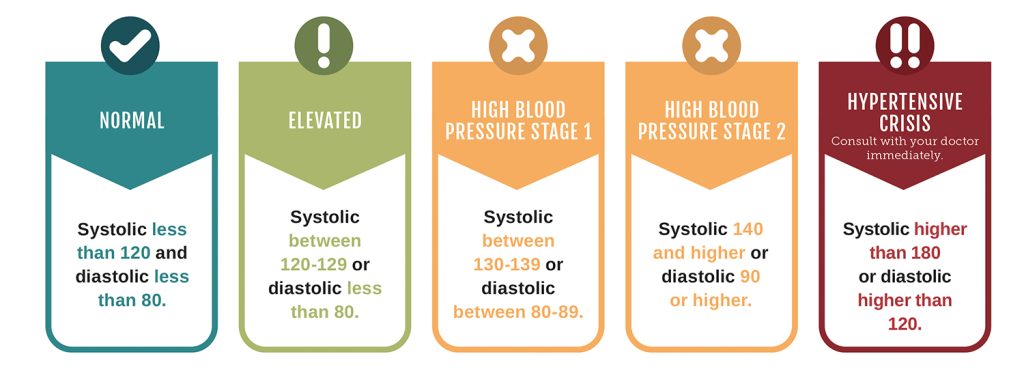
Healthy hearts face risks from many different factors: high cholesterol, obesity, diabetes, tobacco use, an unhealthy diet, physical inactivity, and secondhand smoke, among others. But another common — and often misunderstood — risk factor is high blood pressure.
One in three Americans suffers from high blood pressure according to the American Heart Association. Blood pressure is typically recorded as two numbers, written as a ratio (Example: 118/75 mm Hg). The top number, systolic, measures pressure in the arteries when a heart beats and the heart muscle contracts. The bottom number, diastolic, measures pressure in the arteries between heartbeats (when the heart muscle rests between beats and refills with blood).

How is high blood pressure diagnosed?
Health care providers want an accurate picture of blood pressure to chart what happens over time. Starting at age 20, AHA recommends a blood pressure screening at least once every two years.
If a patient’s blood pressure reading comes in higher than normal, a doctor may take several readings over time and/or have the patient monitor blood pressure levels at home before diagnosing high blood pressure.
A single high reading does not necessarily translate to high blood pressure. However, if readings stay higher than recommended over time, a doctor will likely begin a treatment program. Such a program almost always includes lifestyle changes and often prescription medication.
If, while monitoring blood pressure, a patient notes a systolic reading of over 180 mm Hg OR a diastolic reading of over 120 mm Hg, the patient should wait a few minutes and try again. If the reading remains at or above that level, a patient should seek immediate emergency treatment for a hypertensive crisis.
Which number is more important, systolic (top) or diastolic (bottom)?
Typically more attention is given to the top number (systolic blood pressure) as a major risk factor for cardiovascular disease for people over 50. In most cases, systolic blood pressure rises steadily with age because of increasing stiffness of large arteries, long-term buildup of plaque, and increased incidence of cardiac and vascular disease.



